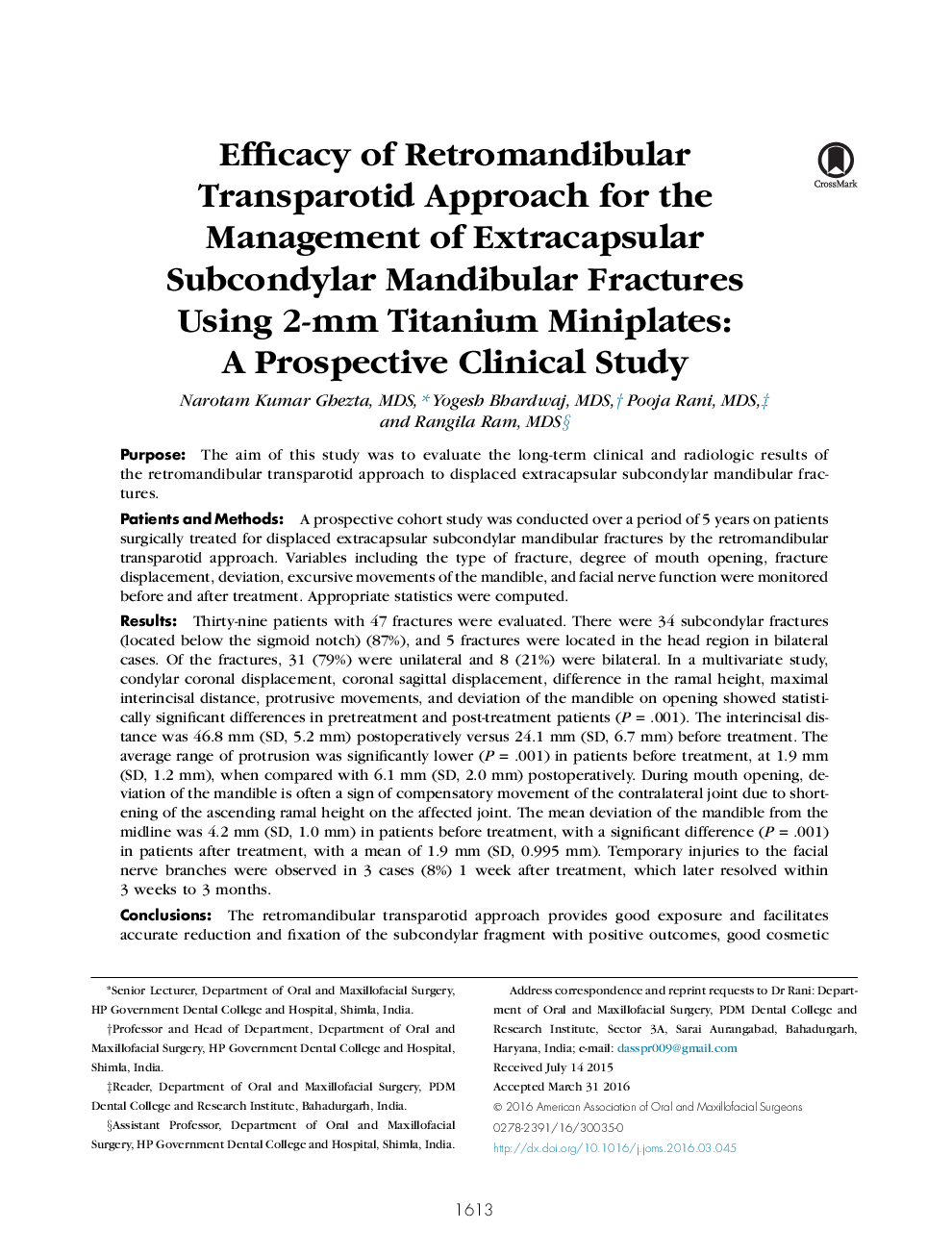| Article ID | Journal | Published Year | Pages | File Type |
|---|---|---|---|---|
| 3155416 | Journal of Oral and Maxillofacial Surgery | 2016 | 9 Pages |
PurposeThe aim of this study was to evaluate the long-term clinical and radiologic results of the retromandibular transparotid approach to displaced extracapsular subcondylar mandibular fractures.Patients and MethodsA prospective cohort study was conducted over a period of 5 years on patients surgically treated for displaced extracapsular subcondylar mandibular fractures by the retromandibular transparotid approach. Variables including the type of fracture, degree of mouth opening, fracture displacement, deviation, excursive movements of the mandible, and facial nerve function were monitored before and after treatment. Appropriate statistics were computed.ResultsThirty-nine patients with 47 fractures were evaluated. There were 34 subcondylar fractures (located below the sigmoid notch) (87%), and 5 fractures were located in the head region in bilateral cases. Of the fractures, 31 (79%) were unilateral and 8 (21%) were bilateral. In a multivariate study, condylar coronal displacement, coronal sagittal displacement, difference in the ramal height, maximal interincisal distance, protrusive movements, and deviation of the mandible on opening showed statistically significant differences in pretreatment and post-treatment patients (P = .001). The interincisal distance was 46.8 mm (SD, 5.2 mm) postoperatively versus 24.1 mm (SD, 6.7 mm) before treatment. The average range of protrusion was significantly lower (P = .001) in patients before treatment, at 1.9 mm (SD, 1.2 mm), when compared with 6.1 mm (SD, 2.0 mm) postoperatively. During mouth opening, deviation of the mandible is often a sign of compensatory movement of the contralateral joint due to shortening of the ascending ramal height on the affected joint. The mean deviation of the mandible from the midline was 4.2 mm (SD, 1.0 mm) in patients before treatment, with a significant difference (P = .001) in patients after treatment, with a mean of 1.9 mm (SD, 0.995 mm). Temporary injuries to the facial nerve branches were observed in 3 cases (8%) 1 week after treatment, which later resolved within 3 weeks to 3 months.ConclusionsThe retromandibular transparotid approach provides good exposure and facilitates accurate reduction and fixation of the subcondylar fragment with positive outcomes, good cosmetic results, and rare major complications. Most facial nerve injuries are transient in nature after this approach. A Synthes 2-mm titanium single mini-plate (West Chester, PA) provides stable results after fixation.
